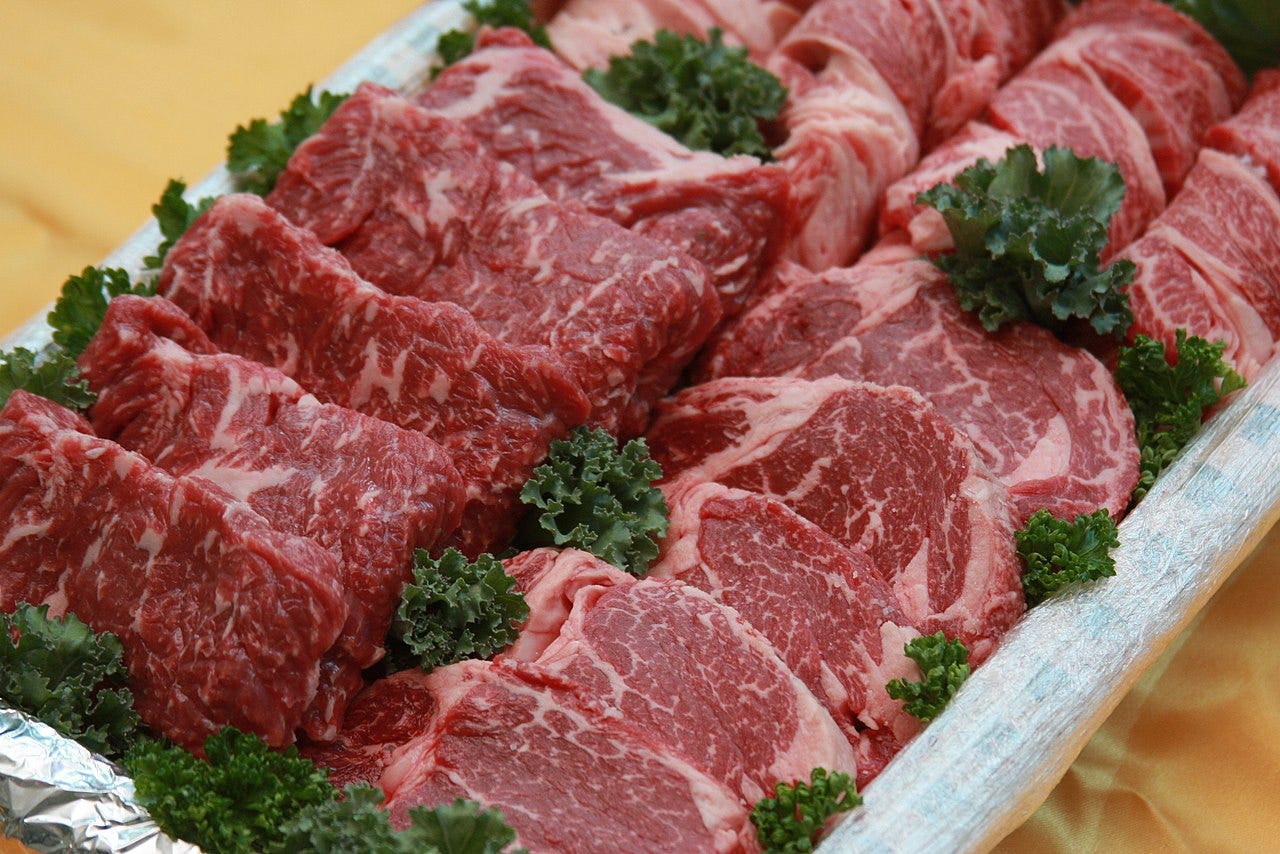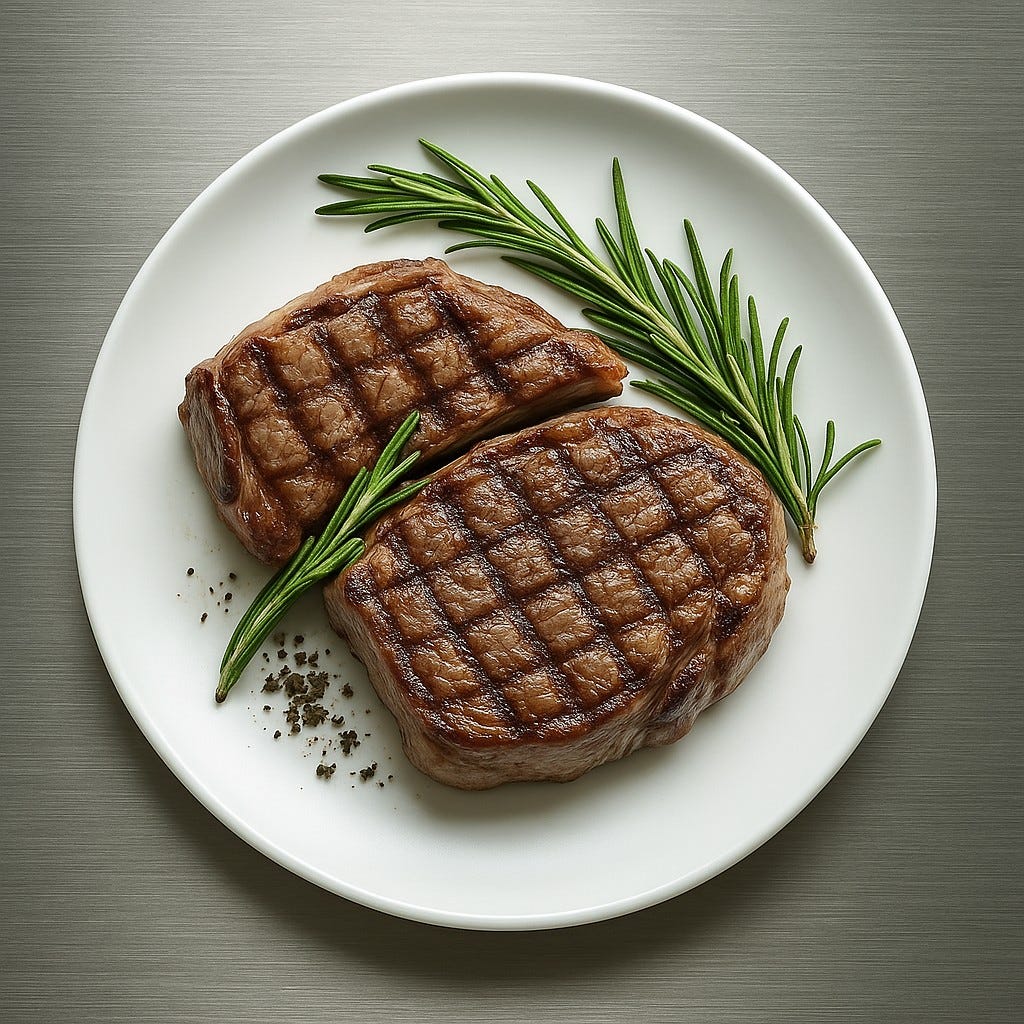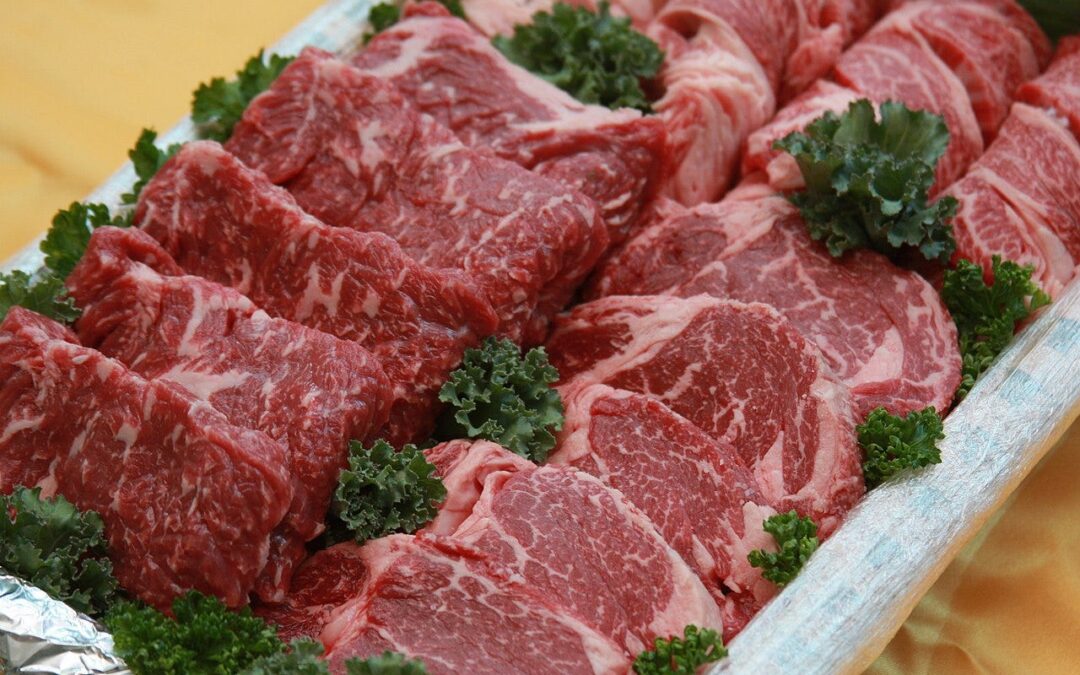
by Ross Kingsley | May 11, 2025 | KNOWLEDGE: MEAT ESSENTIALS
When it comes to premium beef, Wagyu has long been the headline act. Known for its intense marbling and melt-in-your-mouth texture, it’s often considered the pinnacle of indulgent dining. But quietly gaining traction is Hanwoo, South Korea’s native cattle breed. While Wagyu has gone global, Hanwoo remains deeply local—and increasingly respected for its distinct flavor, texture, and rarity.
Origins and Characteristics
Hanwoo (also spelled Han-u) comes from a breed of indigenous Korean cattle with a history stretching back over two millennia. Once used as draft animals, they’ve since become a national symbol of quality meat. These cattle are leaner and smaller than the Japanese Wagyu breeds, producing beef that differs in structure and taste.
Rather than Wagyu’s high-fat, spiderweb marbling, Hanwoo offers a more balanced fat-to-meat ratio. This results in a stronger beef flavor and firmer texture. Wagyu often delivers a soft, buttery experience, while Hanwoo leans more toward a clean, umami-rich profile that appeals to those who prefer a beef-forward taste.
Culinary Expression
Hanwoo’s flavor and structure make it particularly suited to Korean preparations. It shines in classics like bulgogi (thinly sliced marinated beef) and galbi (grilled short ribs), where its firm texture holds up to traditional marinades of soy sauce, sesame oil, and garlic. Its ability to absorb bold flavors without becoming overpowered makes it a staple in Korean barbecue.
In contrast, Wagyu is often served with minimal seasoning or light cooking techniques—quick sears, sashimi-style slices, or steak tartare—to highlight the fat’s richness. Japanese cuisine often emphasizes subtlety, and Wagyu’s texture suits that approach. Hanwoo, by comparison, tends to complement heartier, spiced preparations.
Global Reach and Market Value
While Wagyu is now produced and exported from Japan, Australia, and the U.S. under strict breed and grading regulations, Hanwoo remains largely confined to Korea. Export controls and limited supply mean you’re unlikely to find it on menus outside South Korea, except at rare specialty events or high-end Korean restaurants.
Inside Korea, Hanwoo commands a premium. Prices often exceed those of imported Wagyu, owing to small-scale farming practices and national pride in its quality. Government-backed traceability programs and grading systems maintain consistent standards, which further reinforces consumer confidence and demand.
Flavor vs Fame
Wagyu is a known quantity on the world stage, featured in luxury steakhouses and food festivals globally. Its reputation is tied as much to branding and availability as to its taste. Hanwoo, on the other hand, is still somewhat niche—but gaining respect among chefs and food enthusiasts who prioritize regional flavor, ethical sourcing, and culinary authenticity.
This isn’t a case of one being better than the other. The two offer very different experiences. Wagyu excels in richness and tenderness. Hanwoo appeals for its flavor depth and cultural context. For diners looking to expand their palate beyond familiar options, Hanwoo offers something less common—and arguably, more grounded.
Final Thoughts
While Wagyu will likely remain a global favorite, Hanwoo represents a compelling alternative for those who appreciate bold, beefy flavor and the stories behind regional food traditions. Its limited availability makes it harder to access, but also more intriguing. For anyone serious about premium beef, Hanwoo deserves a spot on the list—not as a substitute, but as a distinctive experience of its own.
_ _ _
© CHURRASCO PHUKET STEAKHOUSE / ALL RIGHTS RESERVED
Reprinting, reposting & sharing allowed, in exchange for a backlink and credits
Churrasco Phuket Steakhouse serves affordable Wagyu and Black Angus steaks and burgers. We are open daily from 12noon to 11pm at Jungceylon Shopping Center in Patong / Phuket.
We are family-friendly and offer free parking and Wi-Fi for guests. See our menus, reserve your table, find our location, and check all guest reviews here:
https://ChurrascoPhuket.com/
#Churrascophuket #jungceylon #phuketsteakhouse #affordablewagyu #wagyu
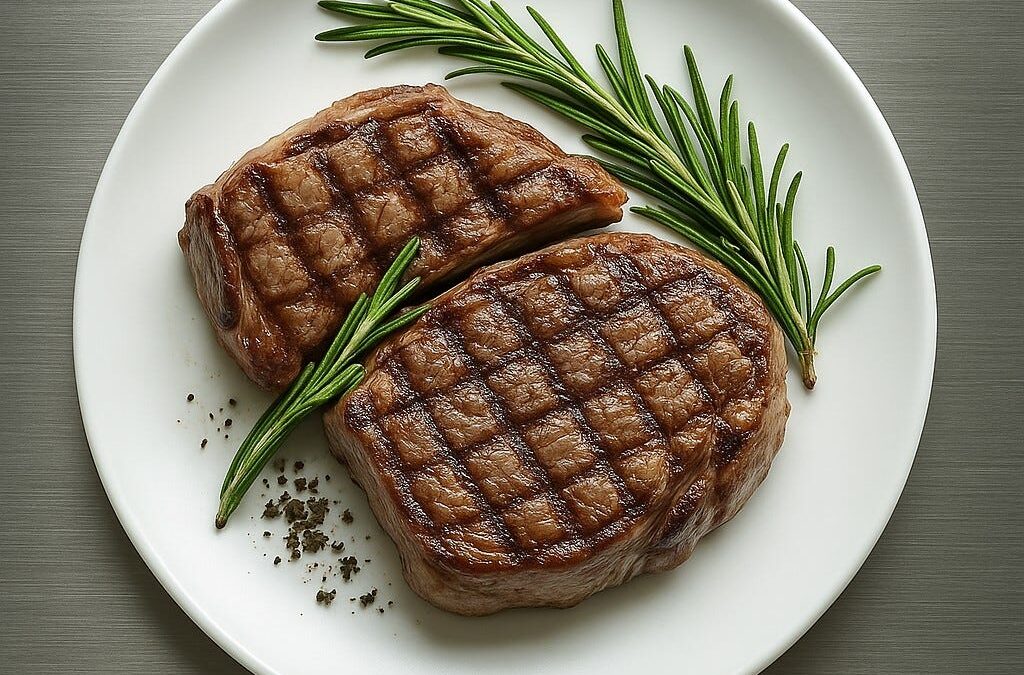
by Ross Kingsley | May 4, 2025 | KNOWLEDGE: MEAT ESSENTIALS
Cooking the perfect steak involves more than just achieving a beautiful sear or hitting your preferred internal temperature. One of the most crucial, yet often overlooked, steps in steak preparation is resting the meat after cooking. This simple act can dramatically improve flavor, juiciness, and texture—turning a good steak into a memorable one.
Retaining Juices: The Key to Flavor
When a steak cooks, the intense heat causes the muscle fibers to contract, pushing juices toward the center of the meat. If you slice into the steak immediately after cooking, those flavorful juices spill out onto the cutting board. What you’re left with is a drier, less satisfying piece of meat.
By allowing the steak to rest, those contracted muscle fibers begin to relax and reabsorb moisture, distributing juices more evenly from center to edge. This results in a juicier, more flavorful bite all the way through. The difference is especially noticeable in leaner cuts like tenderloin or sirloin, which don’t have as much fat to help with moisture retention.
Carryover Cooking: Hitting the Sweet Spot
Resting also plays a role in achieving your desired level of doneness. When removed from a hot grill or pan, a steak continues to cook from residual heat. This is known as carryover cooking, and it can raise the internal temperature by 3–5°C (5–10°F), depending on thickness and initial heat.
For example, if you’re aiming for medium rare (about 57°C or 135°F), you should remove the steak from the heat when it reaches around 52–54°C (125–130°F). As it rests, it will finish cooking internally, giving you perfect doneness without overcooking.
Texture and Tenderness
Aside from juiciness and temperature, resting also improves the texture of the steak. As the internal temperature stabilizes, the muscle fibers soften and become more pliable, resulting in a more tender and uniform mouthfeel. Without resting, you may find the outer portions of the steak slightly overcooked while the interior remains uneven.
This benefit becomes especially clear in thicker cuts like ribeye, strip loin, or T-bone, where different zones of the steak experience different levels of heat during cooking. Resting helps balance those differences.
How Long Should You Rest a Steak?
A good rule of thumb is to rest a steak for five to ten minutes, depending on its size and thickness. Thinner cuts such as skirt or flank steak can rest for 5 minutes, while thicker cuts like ribeye or porterhouse benefit from 10–15 minutes. During this time, loosely tenting the steak with foil helps keep it warm without trapping steam, which could soften the crust.
The Challenge in Professional Kitchens
In theory, resting a steak is straightforward. In practice—especially in a fast-paced steakhouse kitchen—it’s a logistical puzzle. During peak hours, chefs must juggle multiple orders, coordinate side dishes, and manage grill space while ensuring each steak rests the appropriate amount of time. Without proper timing and experience, the process can lead to delays, mismatched plates, or steaks served before reaching optimal tenderness.
This Is How We Do It
That’s why it’s not only best to enjoy premium steaks in dedicated, professional steakhouses, but also to choose ones with a track record of experience and consistency. At Churrasco Phuket Steakhouse, the chefs prepare hundreds of different steaks each week, each expected to come out to guests’ exact specifications. Such a team knows how to manage the rhythm of resting and serving under pressure. And like everything else in life, nothing beats experience—especially when it comes to getting a steak just right, every time.
Resting isn’t just a formality—it’s a scientifically sound step that enhances the steak’s flavor, juiciness, and texture. Whether you’re cooking at home or dining out, taking the time to rest your steak properly shows a commitment to quality. It’s a small pause that delivers big results, ensuring every bite lives up to its full potential.
Image Credit: https://freepik.com
_ _ _
© CHURRASCO PHUKET STEAKHOUSE / ALL RIGHTS RESERVED
Reprinting, reposting & sharing allowed, in exchange for a backlink and credits
Churrasco Phuket Steakhouse serves affordable Wagyu and Black Angus steaks and burgers. We are open daily from 12noon to 11pm at Jungceylon Shopping Center in Patong / Phuket.
We are family-friendly and offer free parking and Wi-Fi for guests. See our menus, reserve your table, find our location, and check all guest reviews here:
https://ChurrascoPhuket.com/
#Churrascophuket #jungceylon #phuketsteakhouse #affordablewagyu #wagyu
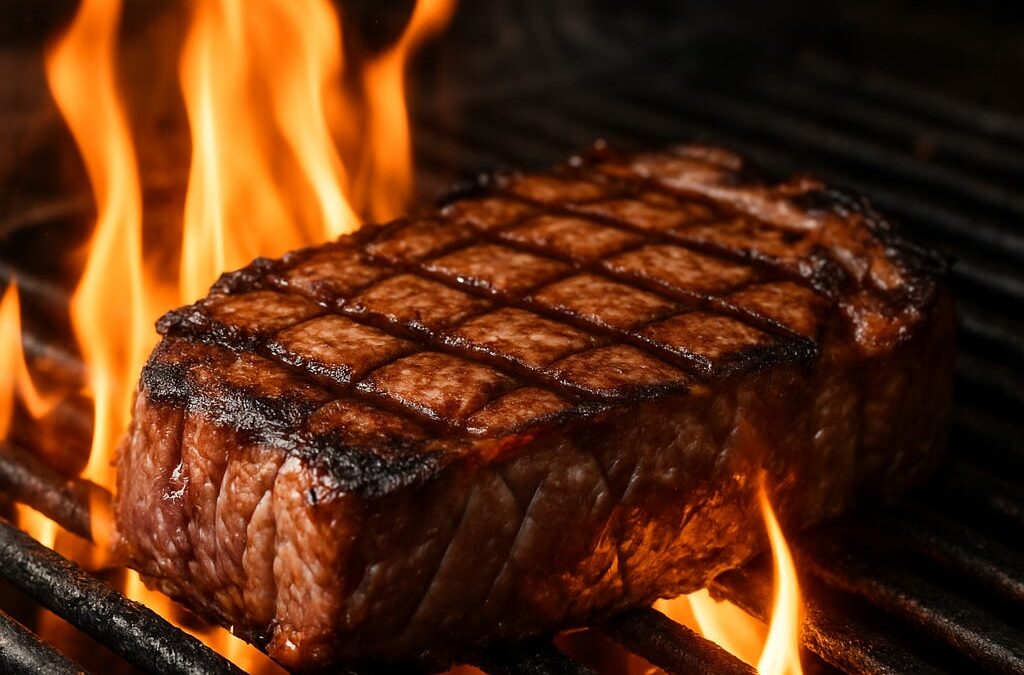
by Ross Kingsley | Apr 27, 2025 | KNOWLEDGE: MEAT ESSENTIALS
In the world of professional steakhouse kitchens, few decisions are as critical or as underestimated as the choice between deep-chilled and frozen meat. For restaurant chefs and owners committed to quality, this single decision can make or break the final dish. Let’s break down why deep-chilled meat, which we exclusively use, is the gold standard for high-quality dining.
What Is Deep-Chilled Meat, Really?
Deep-chilled meat is stored in a carefully controlled temperature zone just above freezing—typically between -1°C and 1°C (30°F to 34°F). It’s cold enough to drastically slow down bacterial growth, yet warm enough to avoid the formation of ice crystals that compromise meat texture.
Frozen beef, by contrast, is stored at -18°C (0°F) or below. It lasts longer, sure—but it comes with trade-offs in both taste and texture. What you gain in shelf life, you often lose in culinary integrity.
Flavor and Texture First
The biggest win with deep-chilled meat is taste. By never freezing, the natural cell structure of the muscle remains intact. This means juices stay where they belong—inside the meat. The result? Steaks that are juicier, more tender, and full of flavour. Frozen meat, even when properly thawed, can suffer moisture loss that leaves it dry and bland in comparison.
No Thawing, No Waiting
In a busy restaurant kitchen, time is money. Deep-chilled beef can be seasoned, seared, and served straight from the cold room. There’s no need to plan around lengthy defrosting periods or worry about uneven thawing. For chefs, this means better consistency and faster service.
A Clean, Precise Cut
Presentation matters—especially in dishes like carpaccio, tartare, or premium steaks. Deep-chilled meat maintains its structure, making it easier to slice cleanly and portion accurately. This not only ensures visual appeal but also reduces kitchen waste.
Waste Less, Serve More
Freezer burn, oxidation, and spoilage during thawing are common issues with frozen meat. Deep-chilled meat avoids these pitfalls, leading to less product loss and better yield per cut—another reason why high-end steakhouses make this choice.
So Why Do Some Still Use Frozen Beef?
Frozen beef certainly has its place, particularly in mass production or when supply chains demand it. It’s cheaper to transport, stores for months, and is easy to stock in bulk. But the freezing and thawing process is inherently rough on meat. For restaurants that prioritize price over quality, it might be a compromise they’re willing to make. We are not.
Why We Insist On Deep-Chilled
At Churrasco Phuket Steakhouse, deep-chilled beef isn’t a luxury—it’s the baseline. It’s not just theoretical—it’s what defines every steak, every slice, and every burger we serve. We serve seasoned carnivores and curious foodies alike, and when guests cut into our steaks, they should immediately taste the difference that careful handling makes. Ultimately, deep-chilled meat doesn’t just elevate flavour and texture—it respects the product and the guest.
Image Credit: https://churrascophuket.com
_ _ _
© CHURRASCO PHUKET STEAKHOUSE / ALL RIGHTS RESERVED
Reprinting, reposting & sharing allowed, in exchange for a backlink and credits
Churrasco Phuket Steakhouse serves affordable Wagyu and Black Angus steaks and burgers. We are open daily from 12noon to 11pm at Jungceylon Shopping Center in Patong / Phuket.
We are family-friendly and offer free parking and Wi-Fi for guests. See our menus, reserve your table, find our location, and check all guest reviews here:
https://ChurrascoPhuket.com/
#Churrascophuket #jungceylon #phuketsteakhouse #affordablewagyu #wagyu
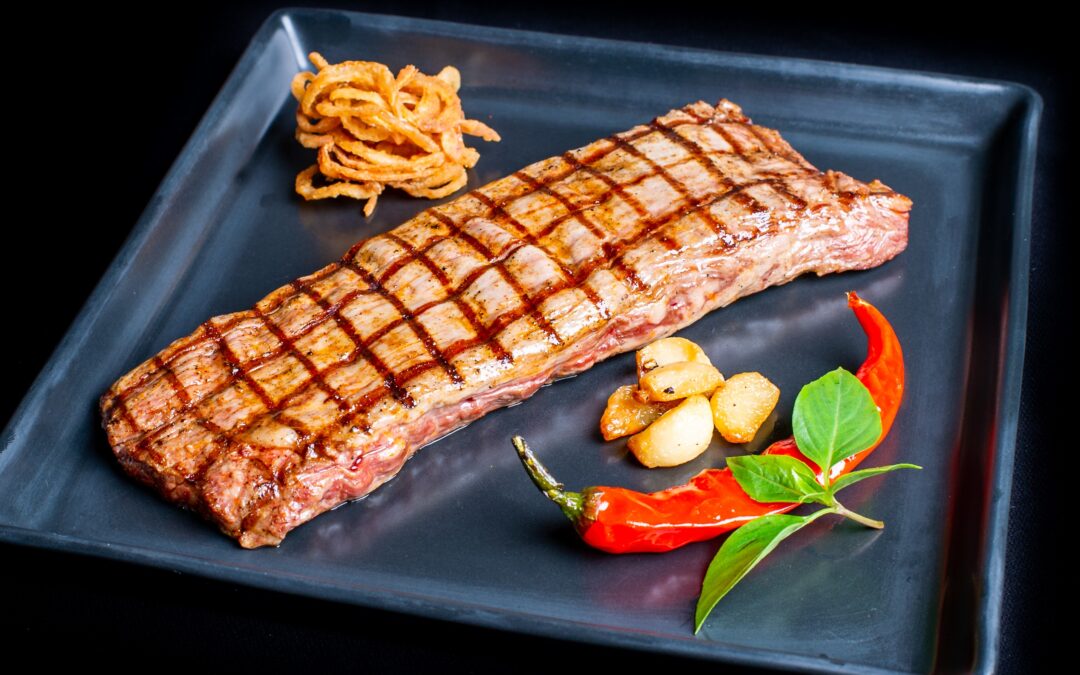
by Ross Kingsley | Apr 20, 2025 | KNOWLEDGE: MEAT ESSENTIALS
Flank steak is a distinctive cut of beef known for its strong flavor and versatility in cooking. Taken from the abdominal muscles of the cow, it’s a lean, flat piece of meat with a pronounced grain. While it isn’t the most tender cut, its rich, beefy taste makes it a favorite in many kitchens around the world.
Characteristics of Flank Steak
Flank steak is long, thin, and relatively lean, with little marbling. The visible grain running through the meat gives it a chewy texture, which can be managed with proper preparation. Marinating the steak is a common method to enhance tenderness and flavor. It’s best cooked quickly over high heat, such as grilling, searing, or broiling, to avoid drying it out.
The way it’s sliced is just as important as how it’s cooked. Cutting against the grain shortens the muscle fibers, making the steak easier to chew. It’s often used in dishes like fajitas, stir-fries, or sliced thin for salads and sandwiches.
Flank Steak Around the World
Flank steak is used in various cuisines and goes by different names depending on the region. In the United Kingdom and France, it’s called “bavette,” which means “bib.” In South America, particularly Argentina, it’s known as “vacio” and is often cooked as part of an asado (barbecue). In Italy, it’s referred to as “lombatello” and features in dishes like braciole. In Korean cooking, thinly sliced flank steak, sometimes called “chadolbagi,” is popular for grilling.
This cut’s global appeal lies in its adaptability and strong flavor. Whether it’s marinated, grilled, or slow-cooked, flank steak plays a key role in many traditional and modern dishes.
Image Credit: https://churrascophuket.com
_ _ _
© CHURRASCO PHUKET STEAKHOUSE / ALL RIGHTS RESERVED
Churrasco Phuket Steakhouse serves affordable Wagyu and Black Angus steaks and burgers. We are open daily from 12noon to 11pm at Jungceylon Shopping Center in Patong / Phuket.
We are family-friendly and offer free parking and WiFi for guests. See our menus, reserve your table, find our location, and check all reviews here:
Home
#churrascophuket #jungceylon #phuketsteakhouse #affordablewagyu #wagyu
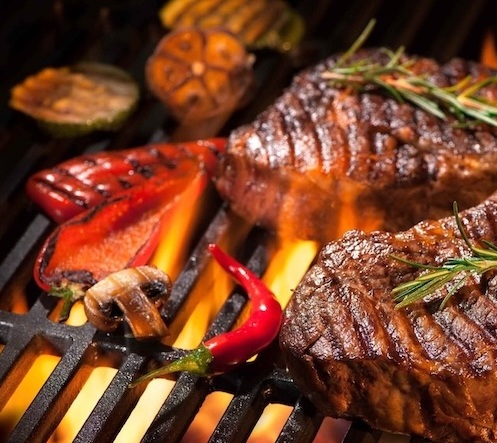
by Ross Kingsley | Apr 13, 2025 | KNOWLEDGE: MEAT ESSENTIALS
Beef is a global favorite, but steak terminology is anything but universal. Depending on where you dine, the same cut can go by completely different names. This is especially true across Spanish-speaking countries and Brazil, where culinary culture and butchering traditions vary significantly. Understanding what Ribeye, Sirloin, and Tenderloin are called locally can help you navigate menus more confidently when traveling through Spain and Latin America.
Let’s take a closer look at how these three classic cuts are known in Spain, Brazil, Argentina, Chile, and Mexico.
Ribeye: Rich, Marbled, and Many Names
The Ribeye is prized for its intense marbling and flavor, typically cut from the rib section. It can be boneless or served with the rib bone attached (then known as a cowboy or tomahawk steak in some markets).
-
Spain: Known as “Entrecot” (from the French entre côte), especially when boneless. If the bone is attached, it might be called “chuletón”, which refers to a thick rib steak with the bone.
-
Brazil: Called “Bife Ancho”. This cut is thick and boneless, often grilled at steakhouses. The ribeye with the bone is called “Costela”, which more broadly refers to rib cuts.
-
Argentina: Also referred to as “Bife Ancho”, especially in steakhouses (parrillas). The boneless version is common, served thick with good marbling.
-
Chile: Typically called “Lomo Vetado”. “Vetado” refers to the visible marbling (veins of fat) running through the cut.
-
Mexico: Known as “Rib Eye” in many urban and upscale restaurants, especially when English steakhouse terminology is used. Traditional butchers may call it “Bife de Costilla” or “Entrecot”.
Sirloin: Leaner, Versatile, and Regionally Split
Sirloin can mean different things depending on butchery systems. In the U.S., it’s typically the rear back portion after the short loin. Across Latin America, however, it often encompasses several sub-cuts.
-
Spain: Called “Solomillo de Cadera” or sometimes just “Cadera”, depending on the specific sub-region of the sirloin.
-
Brazil: Known as “Alcatra”, which refers to the broader sirloin area and can include top sirloin. Another related term is “Contrafilé”, which sometimes overlaps with strip loin.
-
Argentina: Often referred to as “Bife de Chorizo”, which is roughly equivalent to a top sirloin or strip loin in thickness and preparation. It’s one of the most popular cuts on an Argentine grill.
-
Chile: Also uses “Lomo Liso”, meaning “smooth loin,” for sirloin cuts. It’s leaner than “Lomo Vetado” (Ribeye).
-
Mexico: Commonly called “Sirloin”, especially in modern or American-influenced establishments. In more traditional butcheries, the term “Aguayón” or “Cuadril” might be used depending on the exact location on the rump.
Tenderloin: The Universal Favorite with Local Twists
The Tenderloin is the softest and most delicate of the three cuts. It comes from the muscle beneath the ribs, which gets minimal work and thus remains extremely tender.
-
Spain: Universally called “Solomillo”. It’s considered premium and often served in medallion-style portions.
-
Brazil: Known as “Filé Mignon”, a term also used in high-end restaurants across the country. It’s the most expensive cut in many steakhouses.
-
Argentina: Also referred to as “Lomo”, typically grilled whole or sliced into medallions. It’s lean and seen as a luxurious choice.
-
Chile: Uses the term “Filete” or “Lomo Fino”, with both referring to tenderloin steaks.
-
Mexico: Commonly called “Filete” or “Filete Miñón”. Like elsewhere, it’s among the most expensive cuts on the menu.
Final Thoughts
While the Ribeye, Sirloin, and Tenderloin cuts may be biologically the same across countries, their names and serving traditions vary dramatically. In Spain and Latin America, cultural preferences and local butchering styles shape how each cut is named, prepared, and appreciated.
Whether you’re enjoying a “Bife Ancho” in Argentina, a “Solomillo” in Spain, or a “Lomo Vetado” in Chile, understanding these alternative names can make for a richer—and tastier—steak experience abroad.
Image Credit: https://churrascophuket.com
_ _ _
© CHURRASCO PHUKET STEAKHOUSE / ALL RIGHTS RESERVED
Reprinting, reposting & sharing allowed, in exchange for a backlink and credits
Churrasco Phuket Steakhouse serves affordable Wagyu and Black Angus steaks and burgers. We are open daily from 12noon to 11pm at Jungceylon Shopping Center in Patong / Phuket.
We are family-friendly and offer free parking and Wi-Fi for guests. See our menus, reserve your table, find our location, and check all guest reviews here:
https://ChurrascoPhuket.com/
#Churrascophuket #jungceylon #phuketsteakhouse #affordablewagyu #wagyu
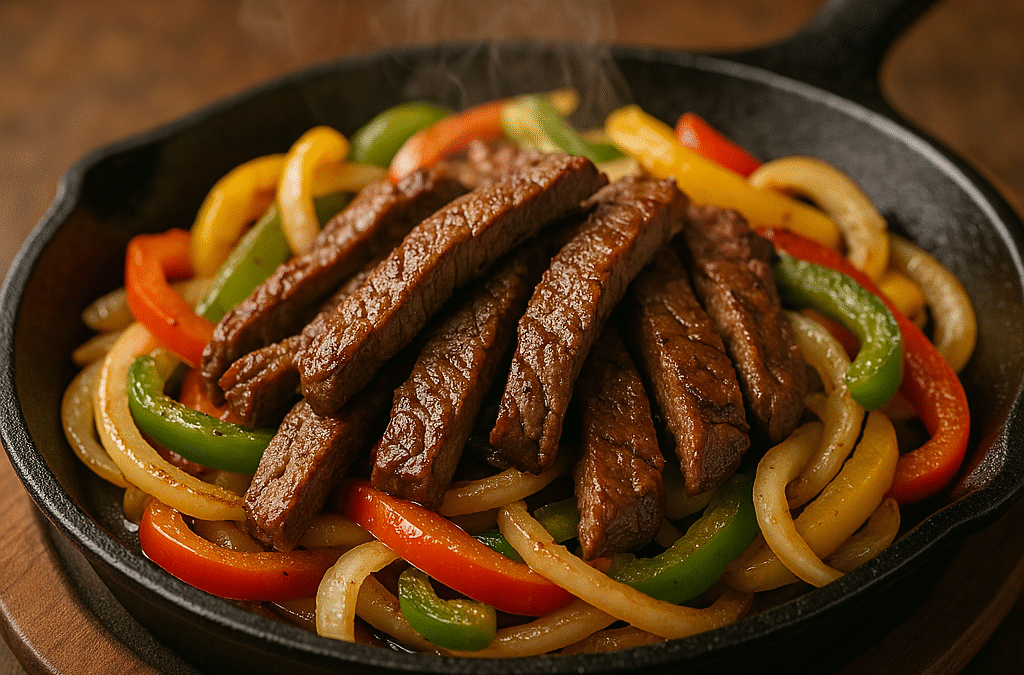
by Ross Kingsley | Apr 6, 2025 | KNOWLEDGE: MEAT ESSENTIALS
Whether sizzling on a hot skillet in a bustling Tex-Mex restaurant, or served with a creative twist in kitchens around the world, Fajitas have become a beloved staple of global cuisine. But behind their popularity lies a rich history that stretches back nearly a century, rooted in the ranchlands of Texas and northern Mexico.
The story of Fajitas begins in the 1930s, when Mexican ranch workers—vaqueros—laboring on cattle ranches in South and West Texas were often paid in part with the less desirable cuts of beef. One of those cuts was skirt steak, a flavorful but tough piece of meat taken from the diaphragm muscle of the cow. Rather than waste it, these workers found a way to make it not only edible but delicious. They marinated the steak to tenderize it, grilled it over open flames, sliced it into thin strips, and served it with handmade tortillas. This simple, practical preparation laid the groundwork for what would later be recognized and celebrated as Fajitas.
The name itself—“fajita”—is a nod to its origins. It comes from the Spanish word faja, meaning “strip” or “belt,” referencing both the shape of the meat and the part of the cow it comes from. Originally, Fajitas were all about skirt steak, which remains a popular choice thanks to its deep beefy flavor. But over time, the dish evolved to include a wide range of proteins. Today, you’ll find Fajitas made with chicken, shrimp, pork, or even tofu, each variation offering a unique take on the dish while maintaining the core components: grilled meat or veggies, tortillas, and toppings.
Fajitas remained a mostly regional specialty until the 1970s, when Tex-Mex cuisine began to take off in the United States. Restaurants in cities like Houston and San Antonio started to embrace the sizzling spectacle of Fajitas, serving them on hot cast-iron skillets that sizzled dramatically as they hit the table. This presentation wasn’t just for show—it also helped keep the meat hot and juicy, adding to the sensory experience. With sautéed onions, colorful bell peppers, and a variety of toppings like guacamole, shredded cheese, sour cream, and pico de gallo, Fajitas quickly became a menu highlight. Their appeal was clear: customizable, flavorful, and perfect for sharing.
As Tex-Mex cuisine grew in popularity, so did the fajita’s global reach. In the UK, grocery store aisles are lined with pre-packaged fajita kits that allow home cooks to recreate the dish with minimal effort. In India, you might find naan substituted for tortillas and the spices adjusted to suit local palates. Korea has embraced fajita fusion too, with bulgogi-style beef often making its way into tortillas, blending sweet soy-marinated meat with fajita-style vegetables.
Yet, despite all these creative adaptations, the heart of the fajita remains unchanged. It’s still about bringing together simple ingredients—meat, vegetables, tortillas—and allowing the diner to make the dish their own. That sense of interactivity and customization is a big part of what makes Fajitas so enduring.
In many ways, the journey of Fajitas mirrors the broader story of food itself: a practical solution born out of necessity that evolves into a celebrated, multicultural dish. From humble beginnings on Texas ranches to stylish tables in cities across the world, Fajitas show how tradition, flavor, and adaptability can come together in one unforgettable meal.
Image Credit: https://www.churrascophuket.com
_ _ _
© CHURRASCO PHUKET STEAKHOUSE / ALL RIGHTS RESERVED
Reprinting, reposting & sharing allowed, in exchange for a backlink and credits
Churrasco Phuket Steakhouse serves affordable Wagyu and Black Angus steaks and burgers. We are open daily from 12noon to 11pm at Jungceylon Shopping Center in Patong / Phuket.
We are family-friendly and offer free parking and Wi-Fi for guests. See our menus, reserve your table, find our location, and check all guest reviews here:
https://ChurrascoPhuket.com/
#Churrascophuket #jungceylon #phuketsteakhouse #affordablewagyu #wagyu


